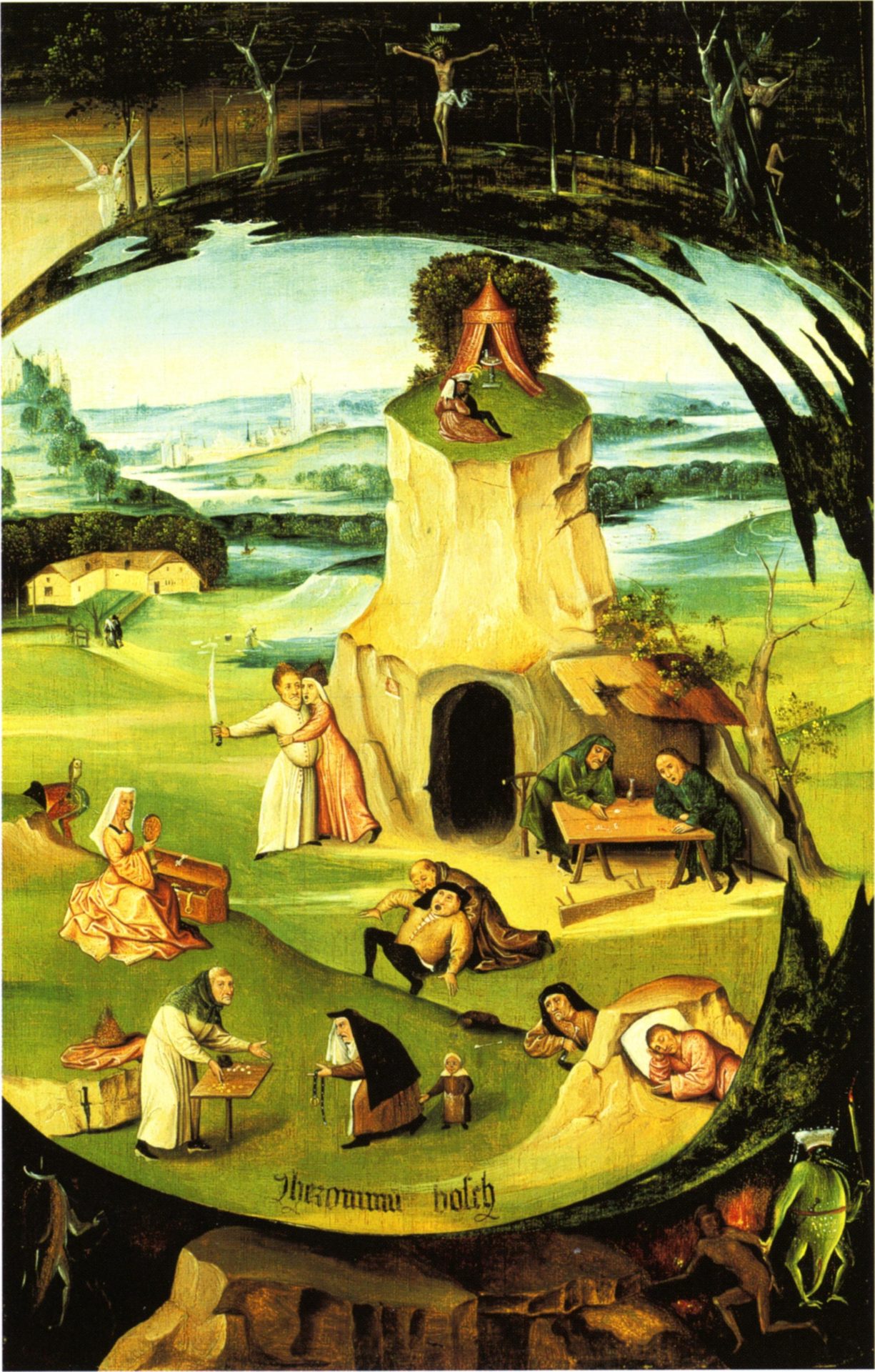
Büttner 2014a
“Fälschung, Plagiat und Kopie nach – Hieronymus Bosch” (Nils Büttner) 2014
[in: Birgit Ulrike Münch, Andreas Tacke, Markwart Herzog, and Sylvia Heudecker (eds.), Fälschung – Plagiat – Kopie: Künstlerische Praktiken in der Vormoderne. Michael Imhof Verlag, Petersberg, 2014, pp. 27-40]
In his Comentarios de la Pintura (circa 1560), Felipe de Guevara points out the circulation of paintings that bore the forged signature ‘Jheronimus bosch’ and that were hung in chimneys to make them look old. Until recently, Alart du Hameel’s engravings with the inscription ‘Bosche’ were erroneously considered representations of lost compositions by Bosch. Bosch’s early fame coincides with the beginnings of graphics collecting. As a result of this, a lot of drawings bear forged names and signatures referring to Bosch, which were probably applied for reasons of profit. For the same reason Hieronymus Cock published the Big Fish eat Little Fish engraving as an original design by Bosch. In the days of Van Mander, Bosch imitations that were not based on a design by Bosch but were signed with his name could be considered forgeries, in spite of the then current ideas regarding forgeries, which differed from our modern standards. An Antwerp document dating from 3rd October 1575 and dealing with the privileges of the St Lucas painters’ guild bears witness to this. Most of the numerous Bosch imitations originating from Antwerp were produced by painters whose names have been completely forgotten now, and rightly so.
An example of such a forgery is probably the Seven Deadly Sins painting that was owned by Margareta Boge, the widow of Joris Veselaer, in Antwerp in 1574. Büttner argues that this could be the Seven Deadly Sins panel which is in the Geneva Fine Arts Foundation today. The Passion scene in the upper part of this painting was inspired by the Passion scene on the backside of Bosch’s St John on Patmos panel in Berlin. Infrared reflectography shows a grid of construction lines forming little squares across the complete panel, and this is never found in Bosch’s works and only rarely in works by followers. Furthermore, the signature ‘Jheronimus bosch’ seems to be an authentic part of the painting and not a later addition. Nevertheless, the label ‘forgery’ should be applied with caution, for interesting cultural-historical works such as the Geneva panel should not be put on a par with for example forgeries of old paintings that were produced in the 19th and 20th centuries.
[explicit 17th May 2020]